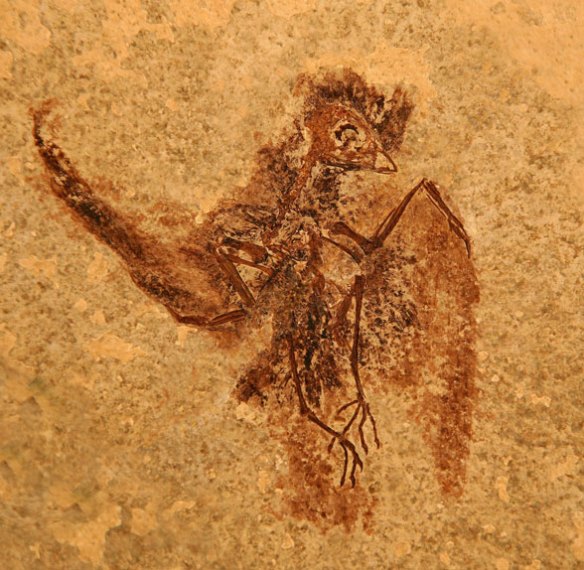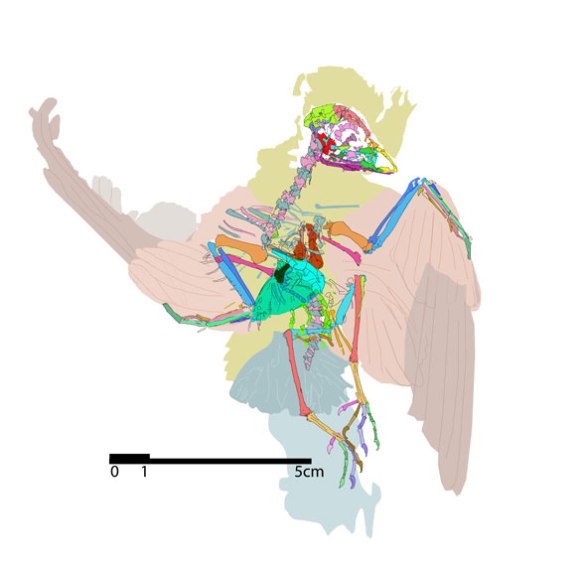Updated September 16, 2017 with a new rostrum for Eocypselus. This taxon is basal to hummingbirds only. Swifts are related to owls.
Eocypselus rowei (Figs. 1-3, Ksepka et al. 2013; Eocene, 50 mya) was originally considered close to the common ancestor of both hovering hummingbirds and speedy swifts (Ksepka et al. 2013). Here, in the large reptile tree (LRT, 1026 taxa) swifts are related to owls, not hummingbirds.
Both swifts and hummingbirds have smaller feet and legs than those of Eocypselus rowei. Because of this, along with their extraordinary flying abillities, swifts and hummingbirds forego walking for the most part. In contrast, Eocypselus rowei appears to have been a good walker with longer metatarsals and legs.
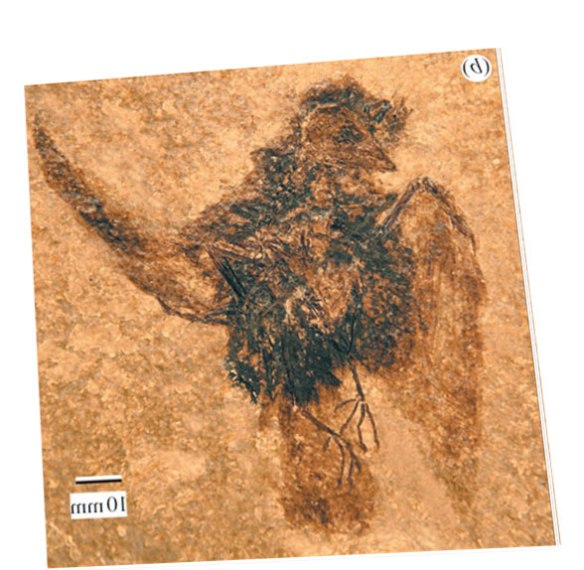
Figure 2. Eocipselus rowei counterplate distorted to match plate. Evidently the plate and counter plate were not taken from the exact same viewpoint.
Eocypselus rowei had a stout humerus (Fig. 6) but not so stout as either a swift or hummingbird, both of which were relatively 2/3 the length and 1/3 deeper (Fig. 6). Likewise in the swift and hummingbird the radius/ulna is about 2/3 of the length in Eocypselus rowei. The manus of the swift and hummingbird is much longer than the combined length of the ulna and humerus (Fig. 4), but not so in the more generalized and primitive Eocypselus rowei.
Lead author Daniel Ksepka reported, “This fossil bird represents the closest we’ve gotten to the point where swifts and hummingbirds went their separate ways.”
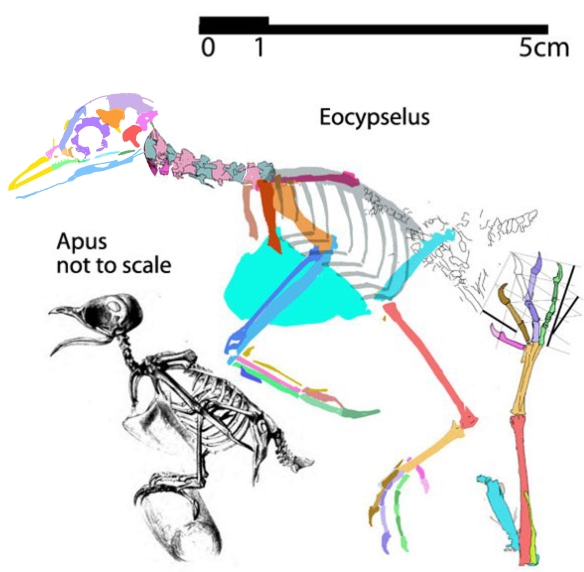
Figure 4. Reconstruction of Eocypselus rowei. The pelvis is preserved in ventral view, so is difficult to ascertain in lateral view, but it probably looked very much like that of most other similar birds. Also shown is Apus (illustration from Eyton 1867), the modern common swift, in which the hand bones exceed the humerus + ulna in length.
Eocypselus vincenti (Harrison 1984, Mayr 2010, Fig. 5) is a congeneric specimen from the Early Eocene of Europe.
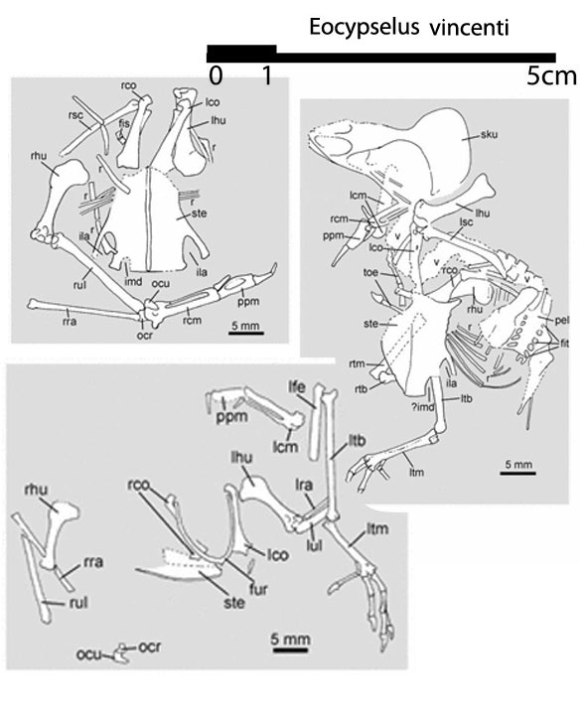
Figure 5. Eocypselus vincenti, a related species from Europe from Mayr (2010). Apparently the manus is slightly larger and the tibia is slightly smaller here than in E. rowei. Note the lack of scapulocoracoid fusion here.
Mayr (2010) also found Eocypselus vincenti to be related to swifts and hummingbirds. Harrison (1984) originally named Eocypelus. Others have also found and described this genus.
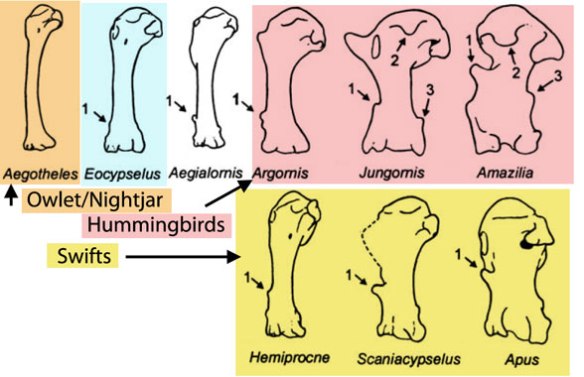
Figure 6. The evolution of the humerus in Eocypselus, swifts and hummingbirds, rearranged and colored from Mayr 2003. In both swifts and hummingbirds the humerus becomes increasingly robust and in both a new process develops (1, 3) that originates in Eocypselus.
As always, I encourage readers to see specimens, make observations and come to your own conclusions. Test. Test. And test again.
Evidence and support in the form of nexus, pdf and jpeg files will be sent to all who request additional data.
Reference
Eyton TC 1867. Osteologia avium; Or, a Sketch of the Osteology of Birds / II. : Wellington, London.
Harrison CJO 1984. A revision of the fossil swifts (Vertebrata, Aves, suborder Apodi), with descriptions of three new genera and two new species. Mededelingen van de Werkgroep voor Tertiaire en Kwartaire Geologie 21:157–177.
Ksepka DT, Clarke JA, Nesbitt SJ, Kulp FB and Grande L. 2013. Fossil evidence of wing shape in a stem relative of swifts and hummingbirds (Aves, Pan-Apodiformes). Proceedings of the Royal Society B: Biological Sciences 280 (1761): 20130580. doi:10.1098/rspb.2013.0580. Supplementary materials here.
Mayr G 2003. Phylogeny of early Tertiary swifts and hummingbirds (Aves: Apodiformes). The Auk 120(1):145–151, 2003. online
Mayr G 2009. Paleogene Fossil Birds (online) Springer.
Mayr G 2010. Reappraisal of Eocypselus—a stem group apodiform from the early Eocene of Northern Europe. Palaeobiodiversity and Palaeoenvironments 90(4): 395-403.
Discover Magazine online

